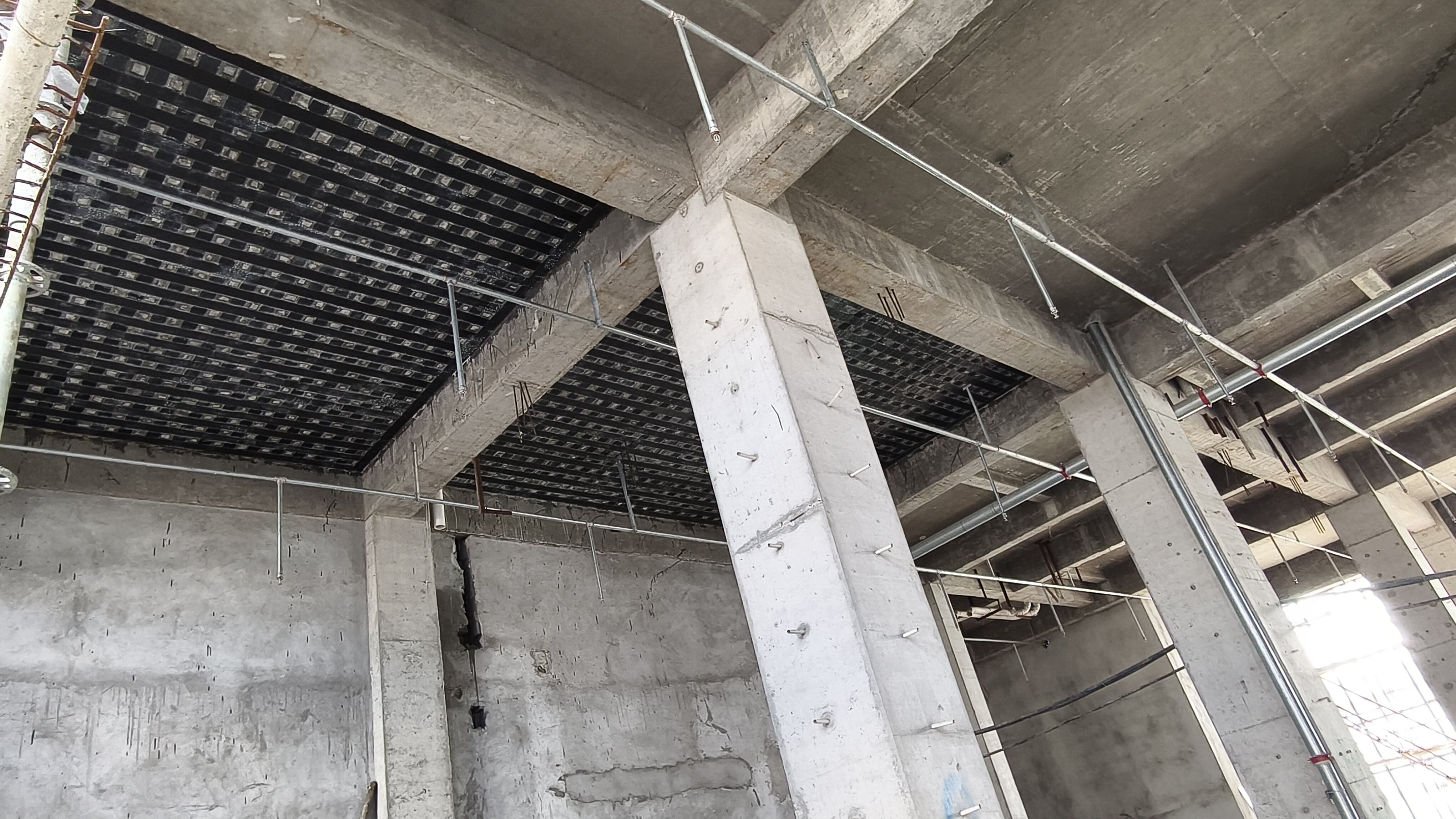Textus Carbonatus (CFRP), ut materia structurae renovationis alti praestantiae, cum colligato adhaesivo impregnante combinatur ut materies composita carbonata. Haec vim trahentem, secantem et resistentiam ad sismos valde auget membrorum structuralium. Late apparet in projectibus renovationis ut onera aedificiorum aucta, mutationes functionum, senectus materialium, insufficiens vis concreti, curatio rimarum, instauratio et protectio componentium in agris asperis servientium. Hoc opusculum processum constructionis et methodos adprobationis textus carbonati tractat.
Processus Textilis Fibrae Carbonis
1.Pars Subiecta Tractatio:
Remove the surface rendering layer of the component and grind the concrete substrate smooth.
Grind the edges and corners of the component section into rounded corners with a radius not less than 20mm.
Thoroughly clean the substrate, ensuring it is clean, dry, and free of oil stains and loose material.
2.Priming Applicatio:
Perform positioning and marking according to the design drawings.
Evenly apply carbon fiber-specific primer onto the prepared concrete substrate.
3.Defectus Reparatio et Levigatio:
Use matching repair adhesive to fill larger defects such as holes, depressions, and exposed rebar on the concrete surface.
Cura ut superficies reparata sit aequalis et adimpleat condictiones iuncturae.
4.Carbonium Sectio Textilis:
Dilucide secta textilis carbonii secundum mensuras descriptas et notatas in loco.
Attende directionem fibrarum et minue amissione.
5.Miscere et Applicare Adhaesivum Imbuentis:
Accurate pensa resinae principalem agentem et durantem secundum proportiones specificatas in manuale producti.
Misce bene velocitate lenta donec liquida adhaesiva sit uniformis coloris, sine bullis, nec cum sedimentis vel separationibus.
Postquam primum stratum adipiscatur statum sine viscositate (superficies siccus) , aeque involva adhaesivum imbibitum praeparatum in aream iuncturae destinatam.
6.Applicatio Textilis Carbonii:
Ponatur textilis carbonii secti in loco unguentato adhibito secundum positionem notatam.
Secundum directionem fibrae, utens radele plasteo proprio (vel cylindro caoutchouc) rumpe et preme et volva e centro ad extrema.
Removebantur aëres intersiti, ut superficies textilis sit plana, stricte coniuncta, et unguentum aequaliter exsudet.
7.Applicatio Secunda Unguenti (Impregnatio):
Rursus volvatur unguentum impregnans aequaliter super superficiem textilis carbonii iam applicati.
Saturentur fasciculi fibri ut unguentum impleatur.
Perge ut rumpe/preme vel volvas ut ulterius removeas reliquos aëres, ut stratum textilis compactum sit, planum, et sine rugis.
8.Coagulatio:
Postquam opus perfectum est, coagulatio naturalis sub condicionibus environmentalibus praescriptis (temperatura, humiditate) perficiatur.
Vitetur perturbatio, humilitas, sol directus, vel onus durante periodo coagulationis.
Pro applicatione multistratata: Exspecta dum stratum praecedens carbonis textilis non sit glutinosum, deinde repete passus 5-8 pro strato sequente. Perficite tandem curationem unificatam.

Nos eligite, eligite ducem fidum texturae carbonii fibrae!
Nunc nos contace pro solutione optima carbonis textilis! Sine nobiscum fieri partnere tuo composito in materia reficienda structurae.
Whatsapp: +86 19121157199
Electronicum: [email protected]
 Nuntii Calidi
Nuntii Calidi